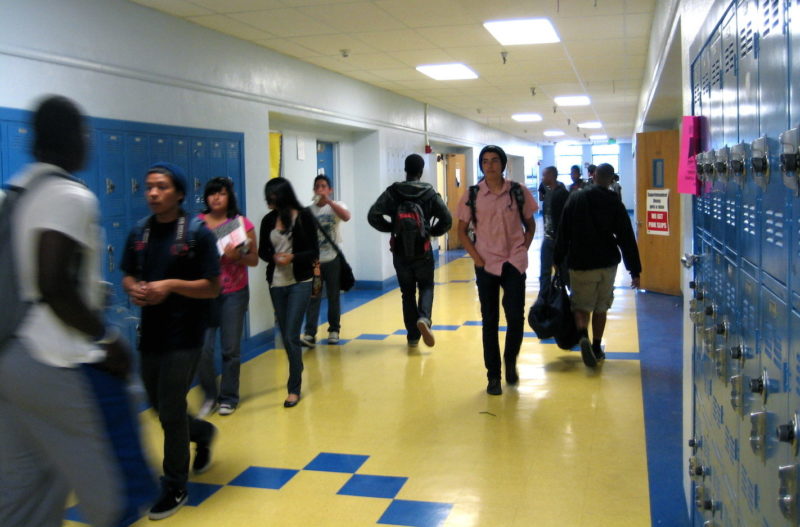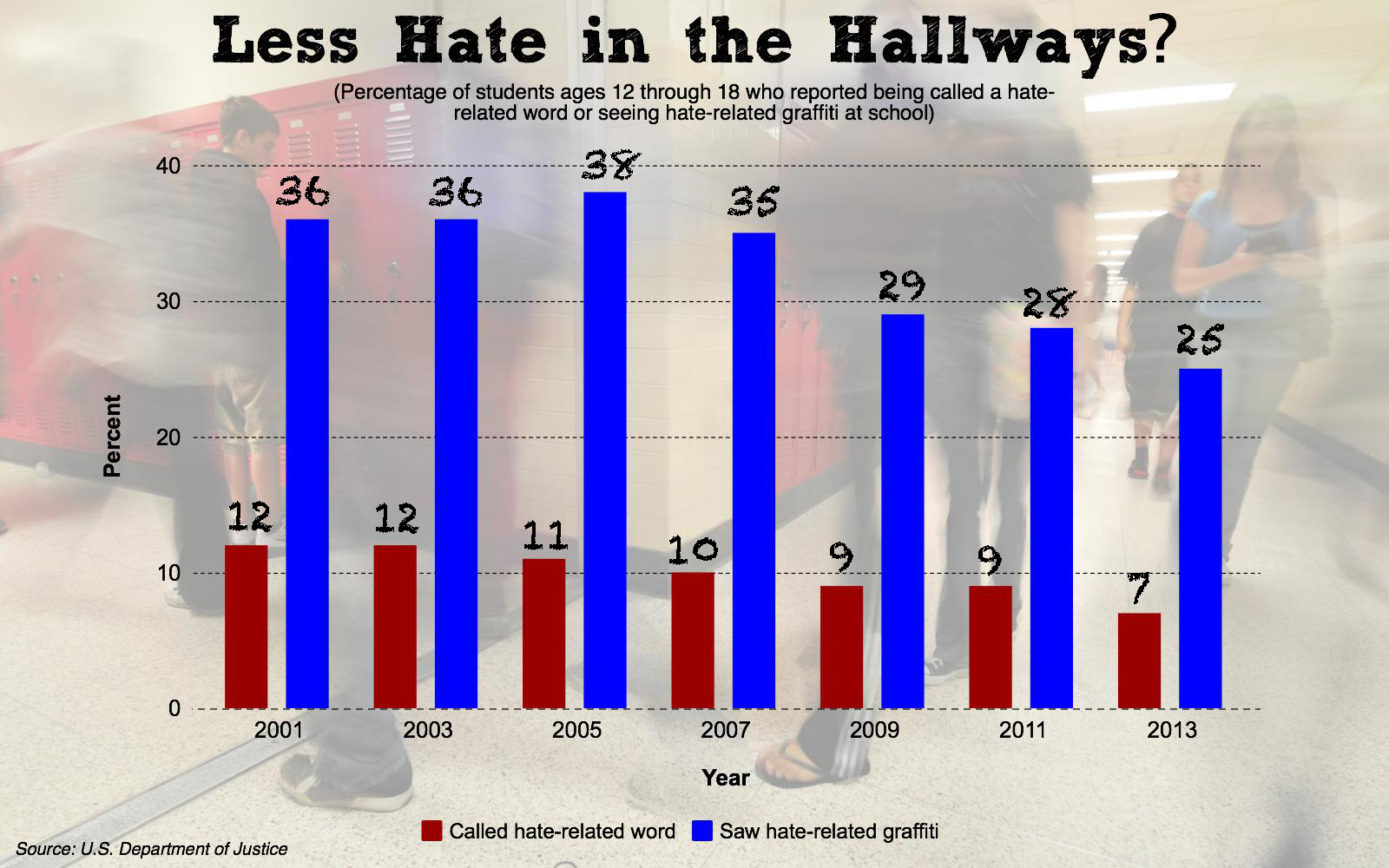 Has the national attention on bullying produced actual results in schools? Survey data by the National Center for Education Statistics (NCES) suggests that might be the case, at least on some fronts. Pulled from the School Crime Supplement (SCS) to the National Crime Victimization Survey, the NCES looks at the use of "hate-related" words and grafitti heard in and around school and finds that both have declined over the past decade.
Has the national attention on bullying produced actual results in schools? Survey data by the National Center for Education Statistics (NCES) suggests that might be the case, at least on some fronts. Pulled from the School Crime Supplement (SCS) to the National Crime Victimization Survey, the NCES looks at the use of "hate-related" words and grafitti heard in and around school and finds that both have declined over the past decade.
In the 2012-13 school year, 25% of students ages 12 through 18 reported seeing hate-related graffitti and 7% said they had been called a hate-related word, down from 28% and 9%, respectively, in 2011. The highest reported number for both offenses was 38% and 11% in 2005.
The SCS survey defines a hate-related term as any "insulting or bad name at school having to do with race, religion, ethnic background or national origin, disability, gender, or sexual orientation" and one that was made on school grounds, in the school building, or on the school bus.
Of those students who were targeted, the percentage reporting racial slurs was higher (50% in 2013) than in 2001 (34%). Gender-based hate terms, however, were reported less in 2013 (15%) than the previous decade (23% in 2001). (In the survey, students are allowed to report being called more than one hate-related word.)
The SCS data also indicates that bullying overall is on the decline. The percentage of students ages 12 through 18 who reported being bullied at school was lower in 2013 than every year since 2005. In 2005, 28% of students reported being bullied. In 2013, that percentage had fallen to was 22% for both male and female students.
 So it appears progress is being made, but how much exactly is hard to say. School bullying remains a serious problem, particularly when you keep in mind the increased verbal harassment faced by Muslim students and transgendered students in recent years.
So it appears progress is being made, but how much exactly is hard to say. School bullying remains a serious problem, particularly when you keep in mind the increased verbal harassment faced by Muslim students and transgendered students in recent years.
Furthermore, some data is just maybe too good to be believed. Every two years, the Department of Education collects civil rights data from public schools' across the nation on a number of issues, including harassment and bullying. The Civil Rights Data Collection (CRCD) is used by the DOE to create transparency around opportunity gaps and student experiences in public schools.
The San Diego Tribune dug into the data this week and found that it paints a "remarkably rosy picture." According to the 2013-14 CRCD, 62% of percent of school districts reported zero bullying incidents. In California alone, 68% of districts reported zero incidents. More than 85% of districts in Texas and Florida did the same.
What's wrong this picture? Probably plenty, least of which is the fact that the data is based on mandatory self-reporting - from schools, not students. As any school bullying expert will point out, many bullying victims are often very hesitant for various reasons to file complaints about being harassed or abused.
“All these zeros do is raise questions,” Erin Prangley, associate director for public policy for the American Association of University Women, told The Tribune. “To say that there are zero incidents of bullying or harassment is just not accurate, nor does it resemble reality.”








